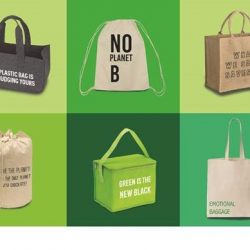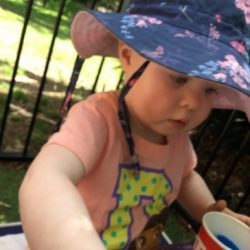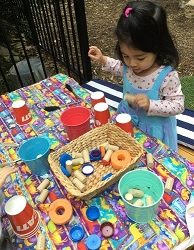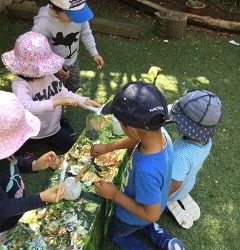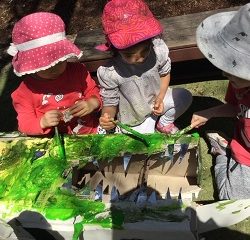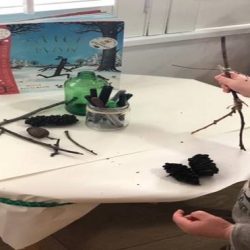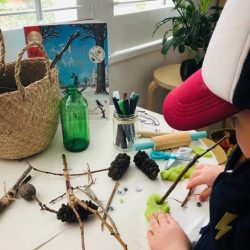Gorton House
Sustainable practice in our work place
You may have heard about the United Nations sustainable Development Goals (SDGs). As you may know, SDGs are simply ways to think about how we can create a more inclusive, equitable, prosperous, and sustainable future for us and, more importantly, for future generations. Therefore, in the Gorton House Infants’ program we are looking at ‘5 Ps’: People, Planet, Partnerships, Prosperity, and Peace. It’s about how we can eradicate extreme poverty and ensure sustainability. SDGs are the ideals that 193 countries at the United Nations in September 2015 committed to achieving together. World leaders, national organisations and local communities are working to achieve these 17 goals by 2030. As a part of the community we in Gorton House infants can be actively involved in making a difference in our environment.
As a team effort, the educators in the Infants Program are planning to stop the use of the plastic bags and to introduce cloth bags to send home dirty clothes and cloth nappies. Also, we’ve come up with other sustainable suggestions including reducing the use of cleaning rags in the kitchen, leaving soiled clothes in a plastic reusable container, using old pillow case covers as a substitute for plastic bags, and, instead of opening the tap to wash our hands before and after each time nappy change we will use the hand sanitiser before using gloves and then do a thorough hand wash afterwards
Educators have been writing in our critical reflection journal and thinking about how we can change our practices to be more sustainable. We are currently looking into how we can further reduce the amount of paper we are using, reduce energy usage, add more plants into our environment, use more environmentally friendly supplies and how we can change our practices to be more consistent in ‘reusing’ and ‘recycling’.
Johnson House
Toddlers
Loose parts play
The children in Johnson House toddlers have continued to be very enthusiastic about exploring loose parts. As the children engaged in the play experience with the materials, they had the opportunity to facilitate their creative skills as they constructed and grouped the materials together. The children were confident to group the materials according to their colour, shape and size.
Open-ended materials promote the children’s learning in several areas of their development. As the children used tongs and their fingers to pick up and place the materials, they were facilitating the development of their fine motor skills. The children were also building on their maths concepts as they grouped the materials together and created patterns with them. As the materials were small, the children also had the opportunity to build on their special awareness as they places the materials alongside, inside or on top of each other.
Preschool
The children in Johnson House preschool have been working on a project with an educator based on the story “See you later alligator”. The children have been busy making different props from the story, and they are currently working on creating a giant alligator. Over many days the children have been using recycled materials and painting their alligator. Linking a project to a story that the children enjoy helps to create interest in working on a communal project and gives children the opportunity to revisit the characters and theme within the book.
Being able to develop and revisit ideas, communicating them to others, and showing persistence are all necessary skills which support the children to feel confident and to be active participants in the preschool environment.
Robinson House
Over the past few weeks at Robinson House there has been an increased interest and focus on writing and drawing amongst the children. To further extend this interest educators asked the children what resources they’d like to add to the literacy spaces within the learning environment. After several discussions a selection of drawing and writing materials were added to encourage exploration and experimentation with a variety of drawing and writing techniques.
Educators planned both play-based and facilitated learning opportunities for the children. These experiences were based on topics from shared conversations during mealtimes as well as from discussions during our gatherings. One example of this learning journey was when an educator introduced still life drawing to the children as a technique. The children were invited to use their senses to touch real fruit placed in the centre of the table in a bowl, and to smell it and study it with their eyes. The children were then invited to draw the fruit, and encouraged to looking closely at the piece they chosen to draw and to add specific details like shapes, leaves, colour and the stem. Later in the week the children drew and wrote a procedure for a recipe to make smoothies and they opened a shop to sell these. The children also used drawing and writing to create the money to use in their play for the shop.
Another example of how children have been learning about language has been through their discussions about Aboriginal graphic symbols and meanings. As a community we have been reflecting on what these symbols mean and drawing them to create games and tell stories; we have also been reading stories that reflect these symbols. The children have connected how our daily Acknowledgement of the land is connected to these stories and symbols. By providing opportunities that guide and enhance children’s language and literacy, educators are surrounding the children with multiple possibilities to develop an understanding of the functions, forms and processes of reading and writing.
Family Day Care Sydney Wide
‘Stick Man’ at Little Pods Family Day Care
The idea for this experience came about from the children at Little Pods Family Day Care going out on their nature walks. The children love collecting the sticks that have fallen from the trees and playing with them, for example poking and hitting things to make music. Since then educator Ultima has been thinking about how to encourage the children to be gentle when playing with sticks, and fostering their imaginative play. This is where the story ‘Stick Man’, by Julia Donaldson, was introduced. The children read the story and listened to and watched the animated story of the Stick Man. Eli and his friends were really engaged with this, and every time they went on a nature hunt, they would point to a stick and say “Stick Man!” Idris also said that the “Stick man needs to go home to his family tree”.
“As teachers discover children’s underlying interests and understandings, you can routinely invite children to explore their ideas by representing them in other ways…Each medium helps children practice different skills and recognise different aspects of the ideas they are pursuing.” (Curtis and Carter (2008). ‘Learning together with young children: A curriculum framework for reflective teachers.’ p.144)To extend on the story of the Stick Man, Ultima set up the table with sticks from the children’s ‘stick hunt’ excursion and added nature coloured textas, model stick man examples, pine cones and the book itself. Ultima was aiming for the children to role play the story with this set up.
Eli was playing with the stick man, making him ‘walk’ around the table and saying “stick man”. Eli added the green play dough from the kitchen and he explored the sticks and dough. “Make stick man” he said, and Ultima answered “What a great idea Eli!” She had thought that she could make the stick man for the children while they watched, but Eli had the better idea of making one himself using play dough and sticks. Ultima added more resources for Eli, such as googly eyes and strings to add to his construction. Eli definitely made his own version of stick man and it was great!
Eli is such a capable and resourceful child. He independently helped himself to create his own construction with materials that were available around him. He was able to transfer ideas and make meaning by constructing with a variety of naturals and made materials (EYLF: Outcome 4). Children learn more effectively when the learning is meaningful, purposeful and related to their lives and interests.
